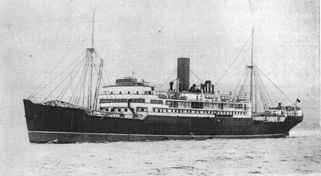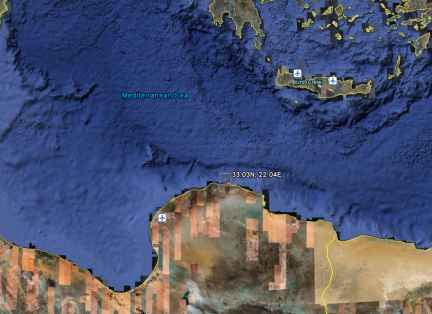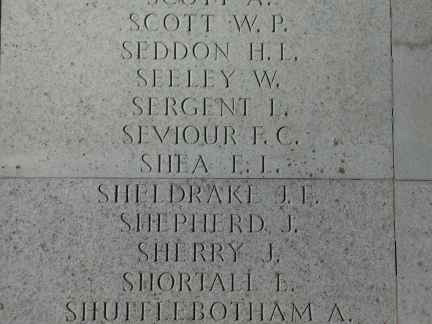| Frederick Charles Seviour | |||||||
|
Surname |
Christian Names |
Service Number |
Rank |
Regiment |
|||
| Seviour | Frederick Charles | 2012466 | Spr | 994 Docks Operating Coy, Royal Engineers | |||
|
Born |
Age |
Enlisted at |
Address |
||||
| Wiltshire | 23 | Wiltshire | |||||
|
Date of Death |
Where killed |
Cause of Death |
|||||
| 17/06/1943 | Mediterranean Sea off coast of Libya | Killed in action - ship torpedoed | |||||
|
Cemetery |
Plot |
Country |
|||||
| Brookwood Memorial | Panel 7 Column 1 | England | |||||
|
Next of Kin |
Next of kin address |
Town |
|||||
|
Notes |
|||||||
| Sunk at position 33.03N,
22.04E - Grid CO 5498 The Yoma had left Tripoli on 16th June in Convoy GTX 2, 14 ships including 3 troop ships, bound for Alexandria. The Yoma was the leading ship of the third column, with two ships astern of her. The next morning, 17th June, was fine, clear and sunny with “light airs”. Around 0730 the ship was heading east at 6½ knots when she was struck by a torpedo from a U-boat, causing the after engine room bulkhead to collapse and the boiler room, engine room and number 5 hold to flood immediately. An eye witness on board recalled, “Although the explosion was loud, it was not as loud as I would have expected. The vessel was ‘lifted’ by the explosion, and settled rapidly by the stern. I was in the Wireless Room at the time. I came out onto the bridge, but could see nothing owing to the steam which enveloped the ship…Nos. 3 and 4 hatches were blown away, and clouds of coal dust were thrown high into the air, smothering everything, including myself. I heard the Master order “abandon ship” and hurried to my lifeboat…” After wrestling with the lifeboats, he found that “by this time the Yoma was well down by the stern and the next thing I knew she sank under my feet and I found myself in the water…as the boat rose I saw a lot of men on the foc’sle head: they would not jump into the water,…as the bow lifted a number of them lost their footing and fell onto the bridge, many others being dragged under by the ship.” Although I tend to trust eye witness reports, do not trust them as exact. Time goes on and memory fades .......... another witness to the same event would probably have seen things differently. Due to it being around breakfast time, most of the men were below decks and, in the scramble for the ladders, the No2 Mess Deck ladders collapsed. The convoy had to steam ahead as it was too dangerous to linger with submarines in the vicinity. So men were in the water for some time before they were picked up by a couple of mine sweepers, one of which was HMAS Lismorre. According to its website, this Australian ship had been sent to the Eastern Mediterranean Fleet to take part in “Operation Husky”, the invasion of Sicily. The Lismore, several other Australian ships and some Royal Navy ships were part of the 2nd Escort Group, responsible for escorting large convoys in the Mediterranean and the Atlantic. The convoys were attacked constantly both by air and u-boats based in the Italian ports. This is not to be confused with the 2nd Support Group, commanded by Capt Johnnie Walker RN who successfully hunted U Boats in the Bay of Biscay. The U boat involved was the U-81. The same U boat that had sank the Ark Royal, but with different Captains. World War Two - The War Sea http://www.secondworldwar.org.uk/yoma.html |
|||||||
|
Memorials Commemorated on: |
|||||||
|
Chippenham Town War Memorial |
Yes | ||||||
|
|
|||||||
Last updated - 14/01/2011
If you have any more details about this person, please contact me and I will update the page.


